‘A history of defiance.’ How these six women became matriarchs of Black Miami
Dorothy Fields still remembers the conversation that changed her life.
The year was 1974 and Fields, then a teacher at Myrtle Grove Elementary, had called the Downtown Library to find some books about Black history ahead of the bicentennial. After rooting around the shelves for what seemed like hours, the librarian returned with just a small folder of obituaries. When asked about the lack of materials, the librarian’s response left Fields speechless.
“I guess those people haven’t thought enough of themselves to write their history,” Fields, 78, recalled the librarian saying.
The librarian’s statement contained no malice, no ill will. It was just a perception, one that motivated Fields to preserve Black Miami, her Miami.
Fields is part of a proud legacy of Black women who helped shape American life, not only for those of African descent but for the country as a whole. Figures like Harriet Tubman, Rosa Parks and Angela Davis have been long recognized. Perhaps less well- known are women who have helped mold South Florida, working tirelessly to protect the rights and history of Black residents.
In this relatively young city, many of Miami’s matriarchs are still living. Here are some of their stories.
‘I don’t take no crap’
Enid Pinkney can recall the very moment her fearlessness began to take shape.
When Pinkney was a teenager, her father got pulled over by the police and refused to take off his hat. The officers tried everything — slapping the hat off, threatening to take him to jail, asking his wife to calm him down — but to no avail. Eventually, they packed him in the back of their car, leaving Pinkney, her mother and her brother on the side of State Road 9 in the dead of night.
About 10 minutes later, the police returned with her father unharmed because, as she remembered, “he knew his rights.” And when the officers asked if he’d be more respectful, Bahamian-born preacher Henry Curtis spoke with his head held high.
“’I always respect police,’” Pinkney recalled her father saying. “’You the one disrespecting me because you slapped me. You knocked my hat off my head.’”
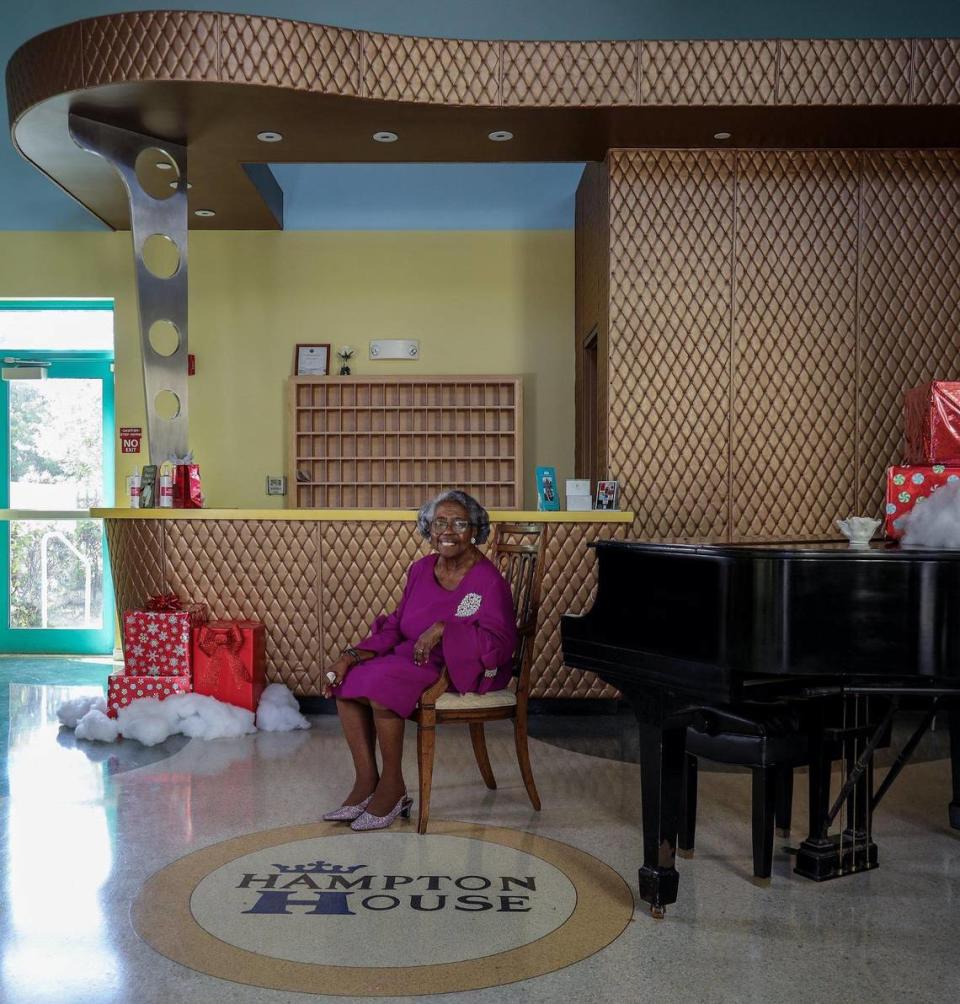
That interaction taught Pinkney this valuable lesson: “I don’t take no crap.”
At 89, Pinkney still exudes the courageous tenacity that has marked her career as a historian and preservationist. The first Black president of the Dade Heritage Trust, she has fought to preserve a Native American burial ground, the Lemon City Cemetery and, most notably, the Historic Hampton House in Brownsville. With nearly four decades of experience teaching in Miami-Dade County Public Schools, Pinkney believes historical landmarks serve as an education tool.
Black history is “lacking in their education and until we get to the core of what’s needed, we’re going to always have people going astray,” Pinkney explained.
That’s part of the reason why Pinkney hasn’t been shy about soliciting donations to the Hampton House. The silent star in the recently released film “One Night in Miami,” the Brownsville hotel was a beacon of Black excellence for travelers and residents alike. After saving it from demolition in 2002, she envisioned the Hampton House as a community hub complete with recording studios, a rehearsal space and educational resources. The funding for the additional spaces has yet to arrive; Pinkney won’t stop fighting until it does.
“It stems back to standing up for what you believe to be the right thing,” Pinkney said of her battles.
Just recently, Pinkney — who holds a master’s degree and an honorary doctorate — won one of her long-fought battles: Miami is finally unveiling historical markers honoring Lemon City. Her presence is requested.
“I’ve been like a tiger on them,” Pinkney quipped.
‘I’ll do all I can to help somebody else’
The Miami that Nancy Dawkins saw when she arrived in the 1960s was another world.
“When I first came here, Black people had a lot of businesses,” said the 97-year-old Dawkins who came to substitute teach in 1946 when she was fresh out of Florida A&M. “You could go on Second Avenue and Third Avenue. There was a restaurant, a dress store, a men’s store, a stocking store, a shoe repair.”
With segregation looming over South Florida, Overtown — then known as Colored Town — was the mecca of Black business in Miami. The neighborhood had a little of everything — a vibrant entertainment district, clothing shops, eateries — all as a result of not being able to attend the whites-only establishments downtown. But as the spirit of change swept over the city, challenges emerged to the facade of separate but equal.
One of the most significant local leaders of the time was Father Theodore Gibson. As president of the Miami NAACP, the Christ Episcopal Church rector helped organize sit-ins across Downtown that eventually led to the desegregation of lunch counters in 1960. It was around this time that Dawkins got her first taste of activism.
Father Gibson “asked a couple of the young teachers to meet down there at McCrory’s store to sit at the counter to get breakfast,” Dawkins recalled of her experience.
The protest came with risks. Workers who participated were subject to dismissal. White violence was always a possibility. Not even the entire Black community was sold on the movement. But Dawkins went anyway.
In this instance, the situation remained calm, she said. “They didn’t say nothing to us. They didn’t tell us to go out or anything. They just didn’t serve us.”
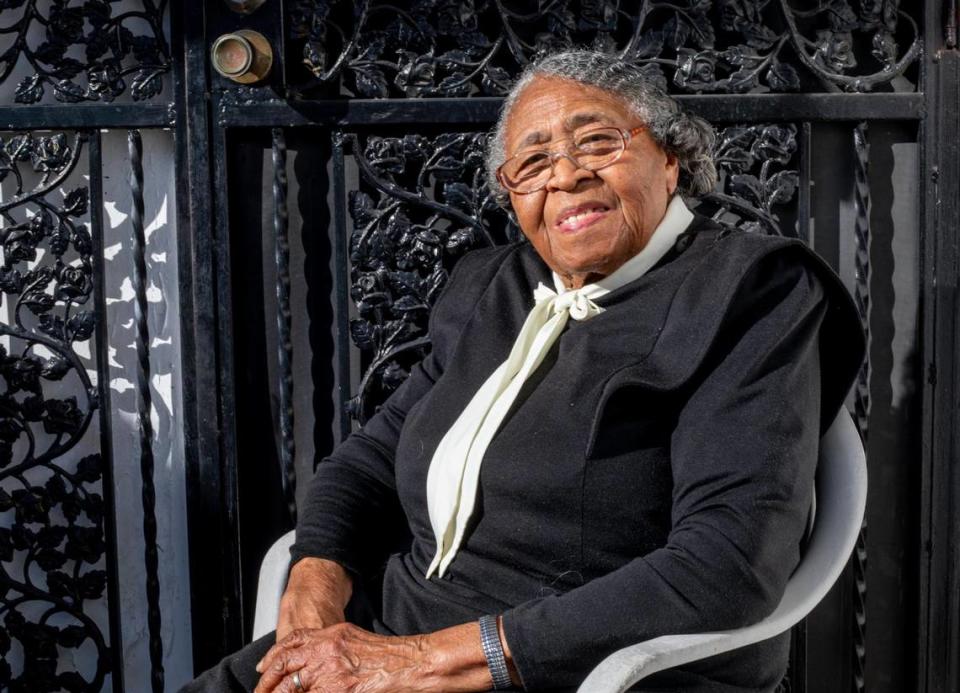
The sit-in sparked in Dawkins a passion for helping others that has never waned. In her 60 years as a Liberty City resident, Dawkins has served her community as a proponent for education and engagement.
For 35 years, she taught public school, helping future generations discover career options, practical skills and several other subjects. In the 1970s, she founded the Theodore Gibson Oratorical Project, a competition that continues to showcase the public-speaking skills of public school students. As an advocate for the elderly, she championed creation of the Carrie P. Meek Center in Charles Hadley Park where seniors can work out and swim in peace.
Often, her role is informal — but critically influential nonetheless.
“As long as I can, I’ll do all I can to help somebody else,” Dawkins said.
‘I had to tell our stories’
In the mid-1900s, Blackness got very little ink in the local mainstream press. When it did, the view was canted.
Most stories in the Miami Herald and Miami News portrayed the Black community as “sloppy, unclean and living in a slummy-looking place,” recalled Bea Hines, 83. “There were beautiful homes in Liberty City and they didn’t even know about it because they focused on the slums and people who were downtrodden.”
The Williston, Fla., native knew their depictions were false. Having moved to Overtown as a small child, she had seen the beauty of Blackness in the segregated but self-sufficient community.
That changed when the Herald hired Hines in 1970. The paper’s first Black female reporter, Hines strived to portray her community in a positive light. It wasn’t always easy — white editors sometimes assigned nonsensical stories about topics like the city dump — but the internal pushback only drove her harder.
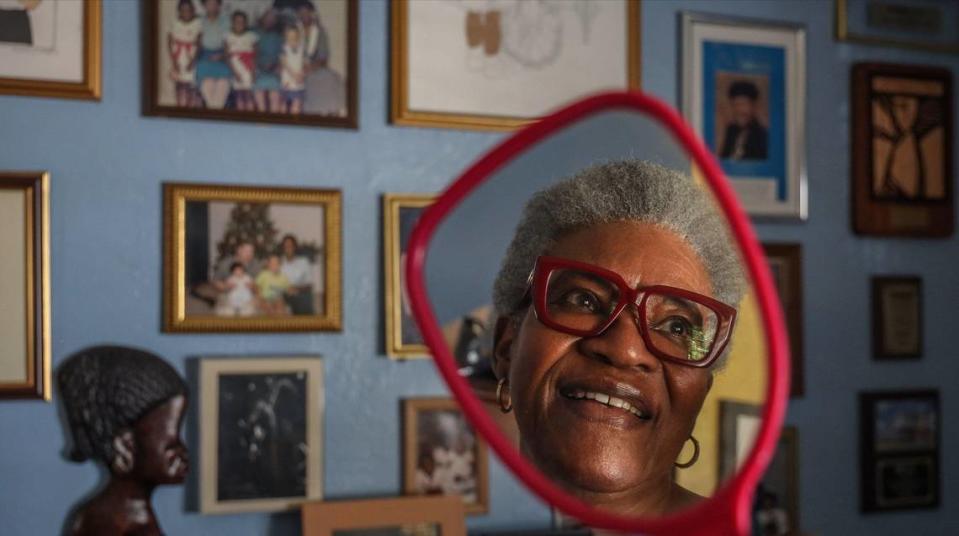
“I had to tell our stories,” Hines said. “It was my duty as a reporter to show us, our culture.”
There was plenty to show. Whether covering the funeral of a Haitian child who drowned while coming to America or sharing her perspective on the ever-changing face of racism, Hines showed the multi-faceted nature of Blackness with a compassion and empathy usually reserved for those of fairer skin.
Her work had another mission as well: unifying Black Miami as it became increasingly diverse.
“I wanted to bring us together because I could feel the divide coming,” Hines said.
That divide has grown even wider over the years as Haitians, Jamaicans, Barbadians and Africans have migrated to Miami. But as someone who grew up drinking from “For Colored Only” water fountains, riding in the back of buses and eating at segregated restaurants, Hines believes in the power of change. It just takes a little bit of empathy.
“Learning from other cultures helps us,” Hines said.
‘I tried to do the best I could’
Thelma Gibson’s push for equality began long before she married one of Miami’s most storied civil rights leaders.
She was a 21-year-old when Thelma Anderson was first hired by Jackson Memorial Hospital in 1947. Among the first Black nurses at the hospital, the Coconut Grove native was relegated to the since-disbanded “colored ward” serving patients who looked like her. Gibson’s impact was immediate.
Rather than be called “Nurse Anderson,” she only answered to “Ms. Anderson,” a title then reserved only for white women.
Her demand for respect were met with resistance . “The other nurses were upset with me and they’d say ‘Girl, you going to get fired,’ ” she said.
But Gibson extended the same respect to her patients, whom she called “Mr.” or “Ms.” Eventually, the trend caught on.
“It started getting to other nurses [who began] to call their patients ‘Mr.’ and ‘Mrs.’ But they would always say to me, ‘Girl, you better be careful,’” Gibson said.
That didn’t slow Gibson, who went on to a 33-year nursing career with stints in D.C. and New York City. She also continued her education along the way, studying at several universities before earning a bachelor’s degree from Teachers College at Columbia University in 1959. A host of firsts came as well. She was the first Black Assistant Supervisor of Nursing in the Dade County Health Department, the founder of the first Miami-Dade’s Women’s Chamber of Commerce, the founder and first president of the Theodore Roosevelt Gibson Memorial Fund, Inc.
In 1967, she married Father Theodore Gibson who, to this day, she credits with teaching her the importance of owning property, business and politics. Their union lasted only 15 years — the civil rights icon passed in 1982 — and gave the widowed Gibson the confidence to stray outside of her comfort zone. The chamber of commerce, the memorial fund, the brief spell on the Miami City Commission — all of those things were born from a desire to advance the Gibson legacy.
“I was just so proud of everything he had done that I said ‘I would not let his name be forgotten,’” Gibson said.
And at 94, she’s still promoting equity from the same Coconut Grove home they bought together in 1978. Her work with organizations including the Theodore and Thelma Gibson Charter School and the Thelma Gibson Health Initiative, which she created to help impoverished families, stand as testament to her commitment to not just the Gibson name but her city as a whole.
“I tried to do the best I could in a community I love,” she concluded.
‘A history of fighting’
At 61, Marleine Bastien is too young to have lived with the separatist practices of the 1950s and 60s. But she has witnessed and fought inequalities specific to Black Miami.
Some four years after the Haitian-born Bastien came to Miami in 1980, a 17-year-old honor roll student named Phede Eugene shot himself in the chest. Ashamed of his Haitian heritage, Eugene had tried to pass as African-American. When his girlfriend discovered the truth, he was so distraught that he no longer wanted to live.
The memory, which Bastien used to illustrate the climate in the early ‘80s, still causes her to cry.
“These tears came from a deep sense of so much struggle, but yet we still have so much to do in order for us to gain equity,” Bastien said.
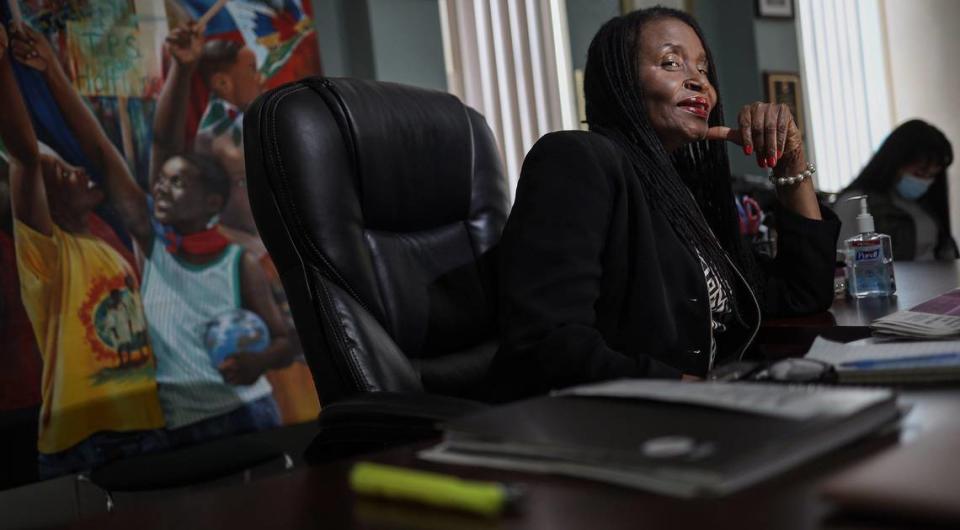
Decades of prejudice could have made Bastien bitter. In Miami, Haitian refugees have been treated as less than second-class citizens, suffering beatings, sexual abuse and long periods of isolation inside detention centers. They’ve been branded by their health status, when the U.S. Centers for Disease Control listed Haitians as high-risk for AIDS in the early ‘80s, African-Americans egged her cousins as they walked to English classes. Some Haitian kids have been beaten simply for being Haitian.
Undeterred, Bastien, a licensed clinical social worker with a master’s degree, has continued to champion immigrant rights in South Florida. She demanded equality in the streets at protests in front of the White House. She argued for it in court rooms. She started the Family Action Network Movement to provide not just Haitians but all Black and brown people with the tools for success. She also helped found the Florida Immigrant Coalition and the Center for Haitian Studies.
“We are one people, no matter where we’re from,” Bastien said. “The struggle for freedom, the struggle against racism, xenophobia is one.”
Bastien’s biggest win came in 1998 when, as the result of her advocacy, Congress passed the Haitian Refugee Immigration Fairness Act that allowed Haitian nationals to actually receive asylum and become U.S. citizens.
“That’s what I cherish most,” Bastien said, “the fact that we are helping people.”
Success hasn’t dampened her passion. With immigration under constant attack during the Trump administration, she was once again on the front lines, arguing against attempts to terminate Temporary Protected Status and Deferred Action for Childhood Arrivals. Fighting, she said, is just in her nature.
“Our history, Black history, it is a history of fighting. It is a history of defiance, it is a history of courage, it is a history of resilience. It is a history of determination to fight and defy the odds by any means necessary,” she said.
‘I hated those stories’
There’s a certain irony in Dorothy Fields’ journey.
A native of Overtown, Fields grew up in a family where nights were spent telling all types of tales about Black life in Miami.
“I hated those stories,” Fields, 78, recalled with a slight grin.
So when the librarian told her that Black people had not thought enough of themselves to tell their history, she knew it wasn’t true. Everyone in Fields’ family — from her maternal grandparents who came to Overtown in 1903 to her own mother to her six aunts and uncles — had a penchant for storytelling.
“It was those stories over time” that led her to establish the Black Archives in 1977, Fields said.
The idea began taking shape shortly after her library visit. Then working with Miami-Dade County Public Schools as a librarian, Fields was assigned to write a book and design a curriculum about Black history. Through her interviews with older Black Miamians and her own study of archives, she soon realized that this project needed a much bigger home than just a single publication.
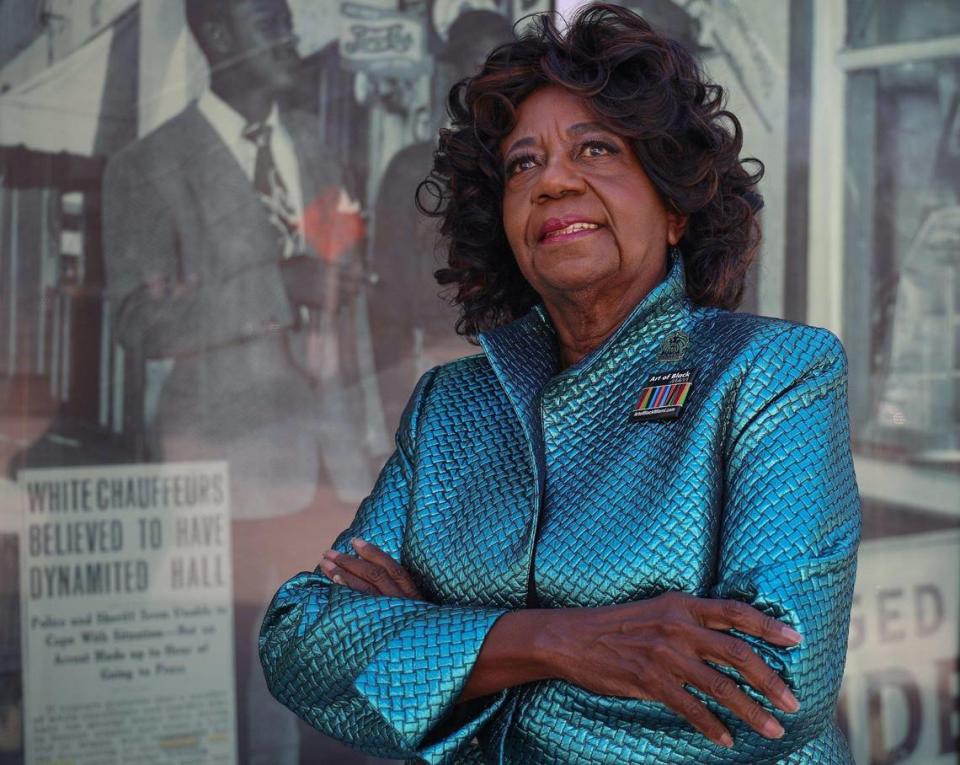
Her love of Miami’s Black history extends beyond documents. Fields — who holds a Ph.D — also helped save local landmarks including the Lyric Theater, one of Overtown’s central entertainment venues that now houses the Black Archives, and the Chapman House, home to one of Miami’s first African-American doctors.
Now, nearly five decades later, the Black Archives stands as living monument to the sacrifices of the thousands of people who came before her.
“Researchers from the universities, from the media, scholars have all come to use this collection to help tell the story not only of Miami-Dade County but of the Black experience in the urban South,” Fields said.

